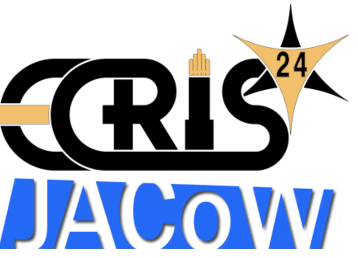Developments of ECR intense light ion sources is an important research axis of the Laboratory of Study and Development of Accelerator at CEA-Saclay. Starting from the SILHI proton source in the 90’s to inject the IPHI accelerator, several SILHI-type sources have been realized and installed for high intensity proton or deuteron accelerators for international projects like IFMIF, FAIR or...
ALISESv3 is a very compact light ion source that has been developed at CEA Saclay in 2018. The easy maintenance procedure of this source allowed us to test many different configurations. On the BETSI test bench equipped with an single Alisson Scanner and a pair a solenoid/deviator, we studied the extraction energy influence, we changed the number of electrodes in order to extract different...
In this paper we present the methodology used to acquire the data needed to obtain and train a neural network that will be used in an ECR source to infer the state of the plasma. All the data is the combination of the control signals and a set of non-intrusive measurements that can be accessed during normal operation.
For this purpose, machine learning techniques are explored. First, a set...
ECR ion sources are widely used to provide ions for various experimental setups. DREEBIT GmbH aims to industrialize this type of ion source technology for efficient and reliable use in, e. g., hadron cancer therapy as well as ion implantation of semiconductors. Our goal is to build table-top sized ion sources which can easily be handled as part of a larger machine such as a particle...
Recent advances with the CERN infrastructure for machine learning allows to deploy state-of-the-art data-driven control algorithms for stabilising and optimising particle accelerator systems. This contribution summarises the results of the first tests with different continuous control algorithms to optimise the intensity out of the CERN LINAC3 source. The task is particularly challenging due...
Industrial accelerators are currently employed in a multitude of fields, including semiconductor manufacturing and medicine. In recent years, there has been a growing demand to enhance the irradiation throughput of industrial accelerators, which necessitates the development of high-current ion sources. In this study, we developed a 2.45 GHz off-resonance 100 mA-class CW microwave ion source...
The Cyclotron laboratory (CRC) was created in 1972 with the installation of the cyclotron “CYCLONE” (Kb = 110) in Louvain-la-Neuve, Belgium. Until late 90’s, this cyclotron was dedicated to research in nuclear physics (ISOL RIBs, used for nuclear astrophysics measurements), nuclear chemistry and medicine (neutron and proton therapy). The CRC now mainly delivers ions beams for industrial...
The GANIL (Grand Accélérateur National d'Ions Lourds) in Caen produces up to 20 % of the beam times dedicated to industrial applications, such as the irradiation of electronic components.
The SAGA (Space Application at GAnil) project aims to increase beam times for these applications in the future in order to meet demand from French and European industries.
In this context, one of the...
Intense pulsed uranium ion beam production is essential for heavy ion accelerators (especially for synchrotrons) in operation and those under construction. Although metallic beam production is tricky, based on our earlier study, intense uranium beams can be expected when operating a electron cyclotron resonance (ECR) ion source especially in afterglow mode. In this study, we aim to produce...
Starting from 2028, physics programmes using ions at CERN have requested lighter ions than the lead usually produced. The Working Group on Future Ions in the CERN Accelerator Complex has been mandated to assess the feasibility of the production and operation of these new ion species. The ion beam production from two of the chosen elements, krypton and magnesium, was studied in the GTS-LHC ion...
Highly charged ion beams have wide applications in fundamental sciences such as nuclear physics and atomic and molecular physics, as well as in applied industries including heavy ion cancer therapy and semiconductor processing. The Electron Cyclotron Resonance (ECR) ion source is one of the most effective devices for producing highly charged ion beams. Based on the requirement for a relatively...
Electron Cyclotron Resonance (ECR) Ion Sources are widely used as the first stage of high energy (MeV – GeV) accelerators providing ion beams for versatile research fields including nuclear and particle physics. However, in the Atomki the 2nd generation 14 GHz ECR ion source operates as a standalone device opening the possibility to develop research areas requiring low energy ion beams in the...
SEISM (Sixty gigahErtz Ion Source using Megawatt magnets) is an electron cyclotron resonance ion source source operating at the frequency of 60 GHz using a gyrotron producing high intensity HF pulse (up to 1 ms/300 kW/2 Hz). The prototype is based on an axial cusp magnetic geometry using polyhelix coils (installed at the LNCMI facility in Grenoble) generating a closed ECR surface at 2.1 T....
Over the past three decades a portion of the accelerated beam time at the Argonne Tandem Linac Accelerator System (ATLAS) has been reserved for ultra-sensitive detection of argon radioisotopes. A unique noble-gas accelerator mass spectrometry (NOGAMS) technique [*] at ATLAS combines electron cyclotron resonance ion source (ECRIS) positive ion production, acceleration up to ~6 MeV/u and...
D-Pace has licensed a 2.45 GHz ECR ion source from Neutron Therapeutics. The ion source will be used for the Neutron Target Demonstrator project at Los Alamos National Laboratory where 10 mA of singly charge krypton ions at 50 keV are required with a normalized 4-RMS emittance of less than 1 mm·mrad. The goal of the project is to create a reverse kinematics neutron capture reaction with ⁸⁴Kr...

